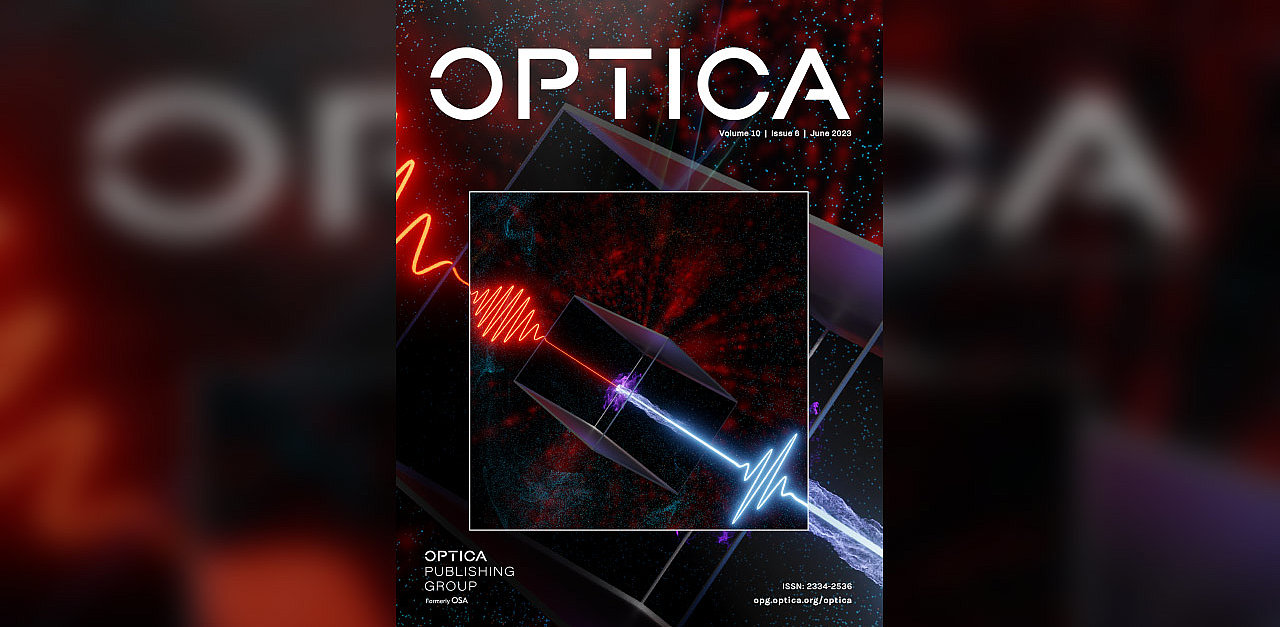Laser research from the attoworld team dedicated to field-resolved infrared spectroscopy (https://www.attoworld.de/fris.html) is highlighted on the cover of this month´s issue of the journal Optica. The illustration shows the compression of a 2.2-µm pulse to single-cycle duration by extreme spectral broadening in a titanium dioxide (rutile) plate. Laser pulses carrying only a single cycle of the electric light-field allow to manipulate electron motion and nonlinear processes in matter on the inherent, sub-femtosecond time scales of the electric-field evolution. Previous single-cycle sources were typically based on kHz-rate Ti:sapphire lasers emitting at 800 nm center wavelength. With the new ultra-stable laser system reported in Optica the scientists are able to generate pulses of single-cycle duration at 2.2 m and 22.9 MHz repetition rate with extremely high reproducibility. Such long-wavelength, single-cycle pulses open new possibilities for efficient frequency-conversion processes and the interaction with low-bandgap materials.
The new laser system is based on a low-noise, diode-pumped laser oscillator with Cr:ZnS as the gain medium. Nonlinear optical simulations (software package available under https://github.com/NickKarpowicz/LightwaveExplorer) provided insight into the remarkable compression process in titanium dioxide, as artistically captured by the illustration: the incoming beam experiences strong self-focusing, leading in an interplay with plasma formation to filament-like propagation through the crystal. This effect maintains the beam at a small diameter and high intensity over several hundred micrometers distance. As a result, the pulses are subject to strong self-phase modulation and self-compression, leading to the exceptional spectral broadening to super-octave bandwidth that allows to generate the single-cycle output pulses. When approaching such short pulse durations, it becomes essential to control the phase of the light field under the pulse envelope (carrier envelope phase, CEP). In collaboration with Wrocław University of Science and Technology the scientists could lock the CEP of the output pulses with a record-low residual jitter of only 5.9 mrad, ensuring that the emitted single-cycle electric-field waveforms are highly reproducible from one laser shot to the next. The unique laser source will be the basis for the next-generation field-resolved infrared spectrometer that is currently under development.
Cover picture by: RMT.Bergues
https://opg.optica.org/optica/aboutthecover.cfm?volume=10&issue=6
Original publication:
Ultra-CEP-stable single-cycle pulses at 2.2 µm
M. Kowalczyk, N. Nagl, P. Steinleitner, N. Karpowicz, V. Pervak, A. Gluszek, A. Hudzikowski, F. Krausz, K.F. Mak, A. Weigel
Optica 10, 801 (2023)
